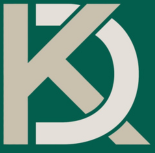I get this question a lot from my clients because wholesale products require the sharing of profits with the retailer, so the margins are lower in your business. While it isn’t right for every business, I have helped several clients with very successful wholesale and consignment lines of business that rapidly grew more income, greater audience following, and ultimately a larger retail base. Here are a few reasons that wholesale and consignment can be great for your business.
Wholesale Products: Larger orders than individual sales
When any customer buys you should do a happy dance. But when a wholesale customer buys it’s a bigger order and a bigger happy dance. If a customer buys one, a wholesale order can buy 12. Even with the loss of margin, you have more volume, and you make more income. Just make sure your numbers are right on the wholesale and retail prices. Know your production, packaging, and labor costs. I have several clients with retail margins over 60-80%, so wholesale margins are still beautiful even sharing 25-40% with a retailer. Take the time to build a solid relationship. Give them the product knowledge and watch how your business customers begin to promote YOUR product when people ask for suggestions.
Wholesale Products: Introduction to their audience
And the reason you don’t mind giving margin to the retailer is… because you are being introduced to their audience! They are paying for their storefront, labor, overhead, etc., and you get to be an option for the customer base they spent time and money building. They are making something, and you are still making something. It is a win-win. You get shelf space, physical or virtual, and the visibility.
Wholesale Products: Reordering more frequently
Another aspect of wholesale is that there are more frequent orders from the buyers. Individual consumers buy maybe a few times a year (depending on the product) but businesses are going to order as they are selling. A key here is to be organized and to be a great account manager. Know the business owner’s intentions with your product. Learn what is selling and what isn’t.
Again, build that relationship. Make suggestions, call, and ask for the reorder (don’t make them run out first), and for the love of all things holy, don’t take it personally if an item isn’t a hit with their audience. The reorders from a business are generally larger than an individual order, so more volume, more income, more chances to serve the business owner and their audience.
Converting fans to direct retail
This happens frequently. After a time, the customer may begin to order directly from you, at retail. This happened to us with the coffee business. People bought our product from a local store, then joined our Facebook group, then directly ordered from us. I’ve seen this happen with several clients of mine as well.
Make sure to have your website or online store on your product label. But please note: DO NOT undercut your wholesalers with deep discounts online. It’s very disrespectful and will cause you to lose wholesale business fast. The retail price is the retail price. If you buy from me, from them, or from the other them. The ONLY time I’d think about discounts would be if something is discontinued or you are discounting wholesale as well, the margin remains the same for the retailer.
One last thing, consignment can be a great way to test out a relationship with a potential wholesale customer. Offer to let them try it out in their business for a time, say 30-60 days, and after it sells out, you would be happy to have them as a wholesale customer. The difference is that on consignment you are paid only after an item sells. In a wholesale account the business customer owns the item once they are purchased at the wholesale price.


